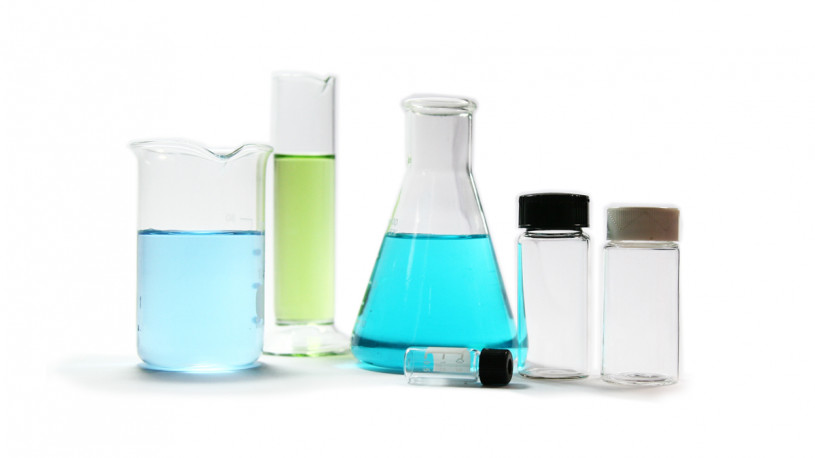-
Where’s the Political Will for Research?
 Continue Reading
Continue ReadingOn Thursday, May 7th, there will be a general election in the UK. With no clear leader in the polls, it seems that anyone might win. But there is certain to be one loser, whoever walks in to No.10 Downing Street, and that is scientific research.
Whilst the debates flow between the party leaders and commitments run hot with promises to increase health service spending, limit immigration or run a referendum on EU membership, no one is talking about science.
When pressed by scientific bodies and researchers, the party leaders boldly declare non-committal statements, such as this offering from Opposition Leader, Ed Miliband, whose party will “…support businesses to raise levels of investment in training and R&D by providing certainty, improving access to finance, and tackling the short-term pressures facing some of our leading firms.”
These are empty words, and like the other leaders, Miliband promises no concrete government investment in science.
This is surprising for a nation with such a notable history on research and discovery. Whilst the G8 group of leading economies, invests an average of 0.8% of GDP on science, the UK has dropped its investment significantly, to a current rate of 0.6%. That represents a cut of 20% in government science funding in real terms, since the last election in 2010.
This low rate of investment is even more surprising given that data released by the ‘Science is Vital’ foundation, shows that despite the UK having just 1% of world population, it produces 16% of the most influential research papers.
The fact is that scientific research, not only advances our respective societies, as well as mankind as a whole, but it also provides jobs. Something only scientists seem to appreciate.
As Dr. Jenny Rohn of University College London states, “Healthy science is vital to our economic future and prosperity…with neither Labour nor Conservatives (the main parties) pledging to protect research budgets, public-spending cuts could hit labs around the UK.”
Maybe there is political will, but it all gets lost in the politics (and economics) of government. As Einstein said, “Politics is more difficult than Physics.” But then he did seem to make Physics look very easy.
Hopefully, those in Britain will not have to wait 5 years for the next general election to find out if there are politicians willing to support research with real investment. For at present, there are many researchers who predict tough times ahead, and they aren’t all researchers in political science.
UPDATE: 13th May 2015
The Conservative party won just more than half the seats in parliament. You can read more about the changes they have made in the week following the election here, including the appointment of a new Minister for Science and Universities.
http://www.rsc.org/chemistryworld/2015/05/tory-election-victory-heralds-new-science-minister-uk
-
When is a process truly ’Green’?
 Continue Reading
Continue ReadingThe past twenty years has seen increased focus on care of the environment and the idea of ‘going green’. With the idea of trying to save the planet, this is perfectly understandable, but as a side effect it has lead to the use of ever more violent language against those who use fossil fuels or manufacture plastic, branding companies like BP and BASF as ‘eco-terrorists’.
Likewise, positive terms are over-used (usually in an effort to sell us something), meaning that many products wear the idea of environmentally friendliness. From ‘green technology’ to ‘green plastic’, ‘biodiesel’ to ‘biochemistry’; it all sells.
Whilst this may be effective marketing, does it ensure that the product will be manufactured, processed and disposed of in a safe, healthy and zero impact way? Almost certainly not. Which makes both consumers and suppliers alike wonder if any of these labels are truly fair?
Certainly we should all live our lives with care for our surroundings and with consideration for the impact we have on the environment. Not to do so, would be reckless, but to label a product or service as ‘green’ or ‘environmentally friendly’ must surely mean more than running the idea passed the marketing department.
Instead, it should be a balanced consideration of all processes, resources, manpower, energy sourcing and waste streams, before the tag ‘green’ can be applied. Up to now, this measurement has been very subjective. But not anymore, because now the definition of ‘green’ may finally have been achieved, as a British University team has developed a tool for calculating ‘greeness’.
Following extensive research in the pharmacuetical and chemical industries, they analized numerous parameters to help gauge the efficiency of using renewable resources. They also set up a number of key parameters, to calculate the products environmental impact and energy consumption, as well as including economic parameters. In fact, the tool specifically assesses new technologies to determine the factors for sustainability of production, as well as health, safety and disposal options.
Whilst this may seem like a small step towards saving out planet, it is perhaps one of the more practical ways that we can live and work sustainably. Hopefully it will also mean the end for countless ‘green’ and ‘bio’ products which are not what they claim to be.
-
What can the history of car paint tell us about future paint trends?
 Continue Reading
Continue ReadingCars have always been objects of great personal joy and pride. How they look reflects on us greatly, as much as the clothes we wear or the way we speak. Thus the colour of the car we drive has become a highly personal and fashionable part of car ownership, and a major headache for manufacturers who must constantly try and predict which colour they should paint their cars.
In an automobile industry which last year was worth over $900 billion, this is now a major science. But has it always been like that? What creates car paint trends and how can we predict the paint colours the market will want in the future?
The First Paints
The very first paints were made from what was most convenient to make, so the neolithic cave paintings in Lascaux, France are painted black (charcoal) and red or yellow ochre (found in the earth).
As civilisation progressed, the rarer, more expensive colours acquired a sense of exclusivity. For example, the dye for purple was made from a small mollusc found only in the Mediterranean Sea, near the ancient city of Tyre in modern day Lebanon. This is why today the colour purple is associated with royalty, as only the elite could afford to wear it. Elizabeth I of England even banned non-royals from wearing the colour.
Carriages
The carriages of the 18th and 19th century were often brightly painted to reflect the luxury and wealth of the occupants. The fact that the paint often faded quite quickly and required repainting, merely reinforced the wealth and status of the owners.
So when it came to people choosing colours for the first cars, they instinctively went for paints and colours that were similar to what they were using on their carriages. As Gundula Tutt, an automotive colour historian and member of the Society of Automotive Historians explains, “Back around 1900 cars were basically motorized carriages and thus, painting methods were derived from the oil-based coating formulations used for traditional horse drawn carriages.”
All that was changed by one man; Henry Ford, whose biggest change was to make cars affordable. Once even his own factory floor workers could buy one of his cars, the idea of luxurious colours was no longer relevant. Practicality was king.
No one is sure if he ever said his famous line, ‘You can have any colour, as long as it’s black,’ as in fact the first Ford machines were red and green and grey. But it is certain that, as practical a man as Ford was, that he would have given great consideration into the colour of his cars. Ultimately choosing black, as it was both easier to apply on the production line and kept its colour longer.
As Tutt states, “There was no binding medium in the early days, so every time a colour would fade or yellow, it’d have to be repainted, and that was expensive.” As a result, Ford developed an asphalt-based baked enamel for his cars, noting that dark colours lasted longer.
Between the wars
After the carnage of the First World War, new methods of painting cars were developed using Chinese wood oil (or Tung oil as its sometimes known). This could be sprayed on, and when applied in cooperation with drying tunnels on the assembly line, dried in about one third of the time.
But more than just being quicker, these new “spar-varnishes” and “spar-enamels,” allowed for durable colours for the first time. Thus the 1920’s saw an array of bright colours being used, indeed, many cars of this time had two or three different colours on one car.
Despite, or perhaps because of the depression, the 1930’s saw the addition of metallic paints, which were originally made from actual fish scales. As it took up to 40,000 herring to make one kilo of paint, this method was reserved for the rich as it was so expensive. The effect though was to give a mother of pearl effect, which showed off the curves of the cars of the day. This effect was later reproduced more cheaply by using aluminium flakes.
Post-war
The 1940s saw a rise in the use of chrome trim and single-colour cars, as well as the development of a sun-resistant clear coat that prevented metallic paints from fading. This finally allowed consumers to choose any colour paint they wanted. Combined with the new found post-war cultural and economic freedom in America, cars were painted in ever more garish shades. This is evident in a look at the colours used by the Ford Motor Co in 1950, a list which includes Casino Cream, Chrome Yellow, Vermillion Red, Admiral Blue and even a Chantilly Green.
By 1968, the number of reds and oranges offered by Ford had more than doubled, as ‘Flower power’ and ‘Psychedelia’ from popular culture influenced the palettes of the day. There were no longer any taboos or technological restrictions on what colour cars could be, and manufacturers could make just about any coloured car they wished. They began experimenting, and sold cars in ever brighter yellows and oranges. Greens became richer (like metallic emerald) or more gaudy (like lime green), but this trend wasn’t to last.
The Present
The fact that the choice of possible car colours is so wide makes it all the more strange that today’s cars are so uniformly coloured.
According to vehicle paint giant PPG Industries, “white has been the most popular colour for new cars for every year since 2011, with worldwide 28% of new cars in 2014 being painted white (up from 25% in 2013). The second most popular colour was black, found on 18% of new cars, while silver and grey tied for third place in the popularity stakes, with each appearing on roughly 13% of new cars.”
This trend for cars in plain colours has also been noticed by Nancy Lockhart, DuPont colour marketing manager, who says, “White has been a constant top runner since really 1998. Silver had its reign from 2001 to 2006 as being the leading colour and now black has come up as being the leading colour in certain segments, especially luxury.”This is a phenomenon explained by Barb Whalen, design manager of colour and materials at Ford, who notes that colour schemes are generally market lead. Colours such as white, silver/grey and black are known to sell, so manufacturers see no reason to try anything new. He says, “There’s a group of customers that always just goes for those basic colours, and that’s what they’re going to come back to.”
Matthew De Paula of Forbes magazine believes that there is a deeper reason for the fashion of colourless cars. He notes that, “Trends in the electronics industry had a big impact on car colours over the past decade. For example, silver became the colour of choice for mobile phones, computers and home entertainment systems in the early to mid-2000s.”
The Future
Whatever the reason behind the current trend, it is clear that car colour is an important factor. As a recent PPG survey states, “Consumers rate exterior colour of equal importance as low price, advanced technology, and low maintenance costs, when purchasing a new vehicle.”
But perhaps more interestingly from the survey, was the discovery that consumers want more automotive colour choices. With 41% of the automotive consumers surveyed saying that they would prefer a wider range of colour choice. Furthermore, 31% of the automotive consumers surveyed said they were willing to pay extra for a vehicle that expresses their personality through colour.
With this in mind, are we on the verge of a colour explosion in the automobile industry?
Laurie Pressman, who forecasts future trends for US-based colour firm Pantone, predicts, “We do expect to see more natural and organic shades in the next couple of years. This includes creamy beiges and burnt-orange shades. Regionally, gold, beige, yellow and orange are increasingly popular choices for new car buyers in Europe, while browns are making a return in the luxury car market. Gold and citrus had gone down particularly well at this year’s Detroit Auto Show.”
This prediction is supported by market researchers at PPG, who believe that, “drivers will continue to see an increase in natural tones such as coppers, oranges and browns. New models also may be influenced by metal tones such as bronze, pewter and rose gold.”
Interestingly, these same colours were popular in the 1970’s, a fact that has not gone unnoticed by Professor Stephen Westland, chair of colour science and technology at Leeds University, England. His research has found that colour trends tend to be cyclical, with shades that were common in the past returning to popularity in later generations. As he explains, “Many of those [buying cars today] might not be so old as to remember brown and cream cars,” he said. “So maybe those colours have lost the negative connotations and have started to appear fresher.”
Of course, no one can accurately predict the future, especially when trying to find out what a large group of people will want in a year’s time. But given that there are only main seven colours in the rainbow, plus black, white, grey and a few metalics, it seems a certainty that colours will repeat over time. So perhaps when predicting car colour trends, it is not so important to look forward to the future as back to the past.
